Once every 10 days, a NC construction worker dies on the job. Many deaths are preventable.
Lenin Romero was framing windows on a home in Wilmington when he fell from a ladder and was impaled by a steel rod. If a $2.30 safety cap had been placed over the rod, it likely would have saved his life.
Joshua “Kerrey” Brindle was laying sewer pipes in Albemarle when a trench collapsed and buried him alive. A commonly used piece of equipment called a “trench box” probably would have prevented the cave-in.
Timoteo Luna Anbroci was removing shingles from a steep roof in south Charlotte when he lost his footing and fell to his death. A simple safety harness tethered to the roof likely would have saved him, too.
From the high-rise apartments of uptown Charlotte to the subdivisions of the Triangle, there’s a largely hidden cost to the new stores, homes and office buildings rising across North Carolina.
Once every 10 days, on average, a construction worker here is killed on the job.
More people die at construction sites than any other workplace in this state. And nowhere are those deaths more common than in Mecklenburg County, where more than 40 construction workers died on the job over the past decade.
In 2023 alone, at least six construction workers died in Charlotte, five in high-profile cases where builders were cited for unsafe conditions that led to a scaffolding collapse and a historic fire.
But many others in North Carolina die with little public notice.
A Charlotte Observer investigation found:
▪ NC construction deaths have climbed. Over the past decade, nearly 360 construction workers died on the job in North Carolina, according to state and federal data. In 2022, the most recent year for which federal data is available, 47 construction workers lost their lives — more than any of the previous 10 years.
▪ Hispanic workers are most likely to die. Latinos make up about 27% of workers on North Carolina construction sites — but more than 60% of the workers who died on N.C. construction sites last fiscal year.
▪ Many deaths were preventable. Often loss of life could have been averted by simple safety precautions or equipment, such as the harnesses and lanyards that are designed to keep roofers from falling, a review of state workplace safety records show.
▪ State safety oversight has waned. While the death toll rose, the number of workplace safety inspections at North Carolina construction sites decreased by more than half since 2013. This during a decade when construction employment here has grown by nearly 50%, federal data shows.
▪ North Carolina is more dangerous. The workplace fatality rate for construction workers in North Carolina — 11.5 deaths per 100,000 employees in 2022 — was about 20% higher than that for construction workers nationally, U.S. Bureau of Labor Statistics data shows. And it’s about two and a half times higher than the occupational death rate for all North Carolina workers.
Why is this happening?
In interviews with more than 20 construction workers approached off the job, Charlotte Observer reporters heard a variety of reasons, from employees who get complacent to companies that don’t provide enough safety training and equipment. The most common explanation: Safety is taking a backseat to other concerns.
Many contractors try to minimize costs and fees to secure work, workers and their advocates say. They race to meet construction deadlines. And, short on workers, contractors and their crews sometimes cut safety corners to stay on schedule.
‘Where the hazards come in’
Kenny Price, who installs insulation on commercial buildings in the Charlotte area, previously worked on the East Morehead Street apartment building where the scaffolding collapse killed three construction workers in 2023. That tragedy — like many others — resulted from people trying to get things done too quickly, he said.
Many contractors “are all about, ‘you can do it faster if you do it this way.’ That’s where the hazards come in,” Price said. “If you move too fast, something’s bound to happen.”
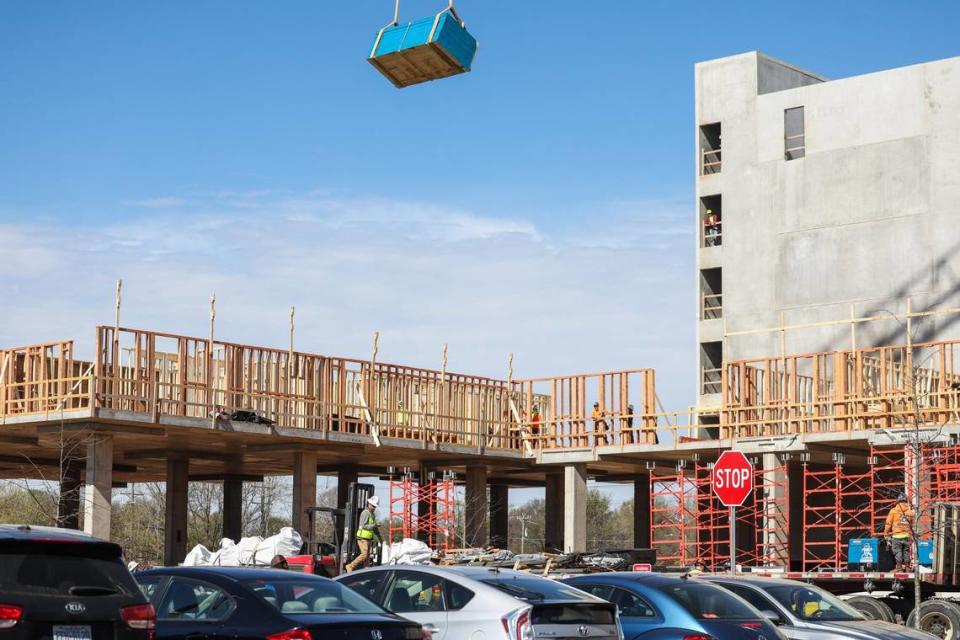
Construction industry leaders say that as building continues to boom across the state, they are putting a premium on safety. Most large construction companies offer safety training in both Spanish and English, and many contractors take part in nationwide safety awareness campaigns, according to Jacob Garmon, director of safety for Carolinas AGC, a large industry trade group.
“We’re putting more emphasis on making sure we’re doing this work properly, doing it safely, to ensure our workers go home safely at the end of the day, because that is the number one priority that we stress as an association,” Garmon said.
State Department of Labor officials, who enforce workplace safety rules here, say they focus heavily on the construction industry because of the many dangers inherent in the work. Roughly half of all compliance inspections done by the department’s occupational safety and health division (OSH) in recent years have been conducted at construction sites.
And so far this year, the number of construction accidents reported by the state labor department is considerably lower than in recent years.
But staffing challenges have made it impossible for the agency to conduct as many inspections as it did in years past, according to Paul Sullivan, Assistant Deputy Commissioner of OSH.
Vernon Sumwalt, a Charlotte lawyer who has handled hundreds of cases involving construction workers who were hurt or killed on the job, said more needs to be done to stop the carnage.
“These fatalities are preventable,” he said. “If we don’t as a society say this is enough, then the question becomes, ‘Who’s next?’ ”
‘It didn’t need to happen’
Almost exactly a year ago, Charlotte residents were reminded of just how dangerous construction sites can be.
Sometime before 9 a.m. on May 18, 2023, at a 239-unit apartment complex under construction in SouthPark, a generator caught fire, igniting spray foam insulation. An employee tried to douse the flames with a fire extinguisher, but they spread quickly. Soon, they had consumed much of the wood-frame building.
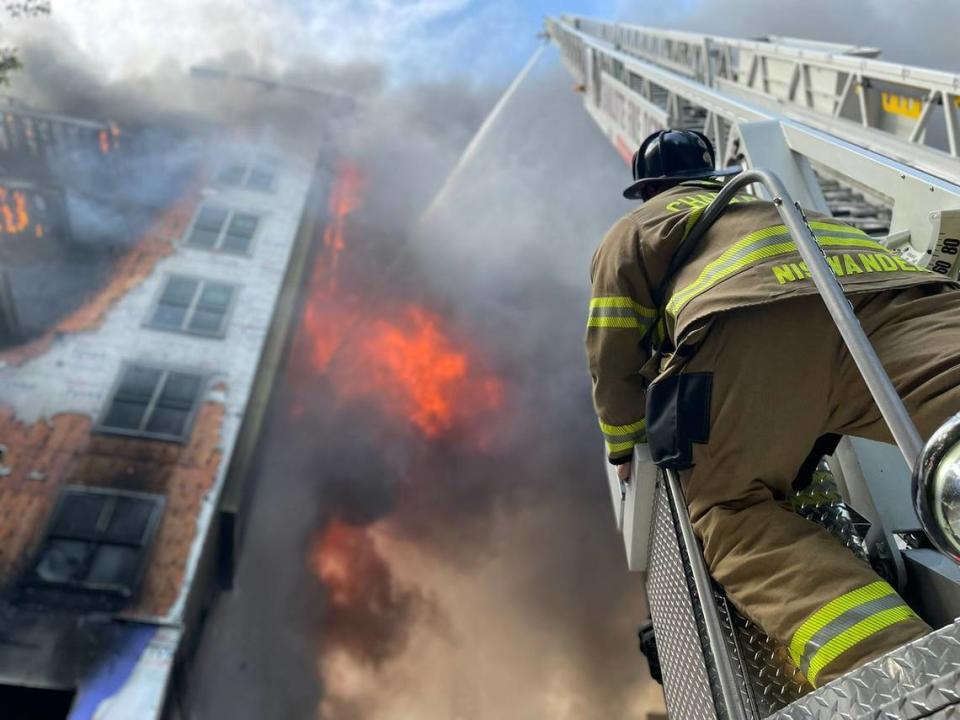
When the fire department arrived, a superintendent on the job site told firefighters they would be able to connect their hoses to a vertical water pipe known as a standpipe, according to a lawsuit filed this month.
But firefighters discovered that there was no standpipe on the interior of the building — a violation of the state fire code. As a result, firefighting efforts were delayed, the lawsuit maintains.
Flames from the massive fire soon were shooting hundreds of feet into the air. Smoke clouds could be seen for miles.
Firefighters, with help from a crane operator on the job, rescued 15 workers in the building. They could hear two construction workers — Demonte Sherrill and Reuben Holmes — yelling for help on the sixth floor. But the smoke was thick and the firefighters couldn’t find them before they were forced to leave the burning building.
In a panicked phone call to their boss, Sherrill and Holmes said they were a football field from the only exit — and the smoke was too thick for them to see it.
Their remains were discovered in what was left of the burned-out building.
MCRT Carolinas Construction LLC, a contractor on the project, failed to provide an accessible way out for the workers who were trapped inside the building when the blaze broke out, workplace safety inspectors found.
About two weeks before the fire, the builders removed a temporary stairway that had been near the spot where Sherrill and Holmes were installing windows and doors on the day of the fire, according to the lawsuit filed by their families. That left just the single stairway — one that was too far away from where the men were working, the complaint says.
The contractor had not developed and implemented an emergency response plan or established an alarm system to alert employees to dangers such as fire, state inspectors also found.
Asked about the state’s findings, and about safety changes put in place after the fire, a spokesperson for MCRT emailed The Observer a statement:
“Mill Creek Residential Trust fully supported and cooperated with the investigation following the fire and conducted our own thorough review. We remain in compliance with all local and national safety codes, and we have implemented safety measures beyond those requirements, including additional safety training for all on-site employees.”
But Faith Fox, an attorney representing the families who filed suit, says it all could have been prevented.
“People certainly didn’t need to die,” she said.
Unsafe conditions in plain sight
An Observer reporter and photographers observed a host of dangerous practices during visits to Charlotte construction sites over the past 15 months.
At a townhouse development near University City, a construction worker could be seen walking along the crest of a roof, more than 30 feet above the ground, with no harness or tether to protect him from a fall.
On a construction site in north Charlotte, a crane unloaded metal railings from the back of a flatbed truck. The area was not barricaded as required by federal safety rules designed to prevent people from being injured by cranes — or by the things that might fall from them. After visiting a retail shop nearby, one woman could be seen walking right past the truck as the crane carried its load overhead.
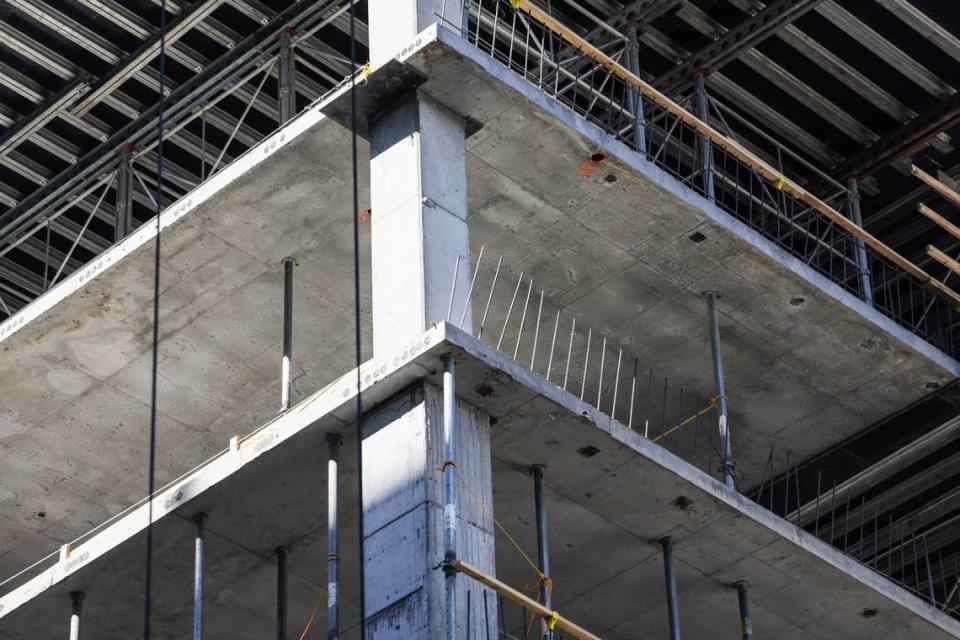
At an apartment complex under construction next to the site of the 2023 scaffolding collapse, Isael Mejia, an organizer for the International Association of Ironworkers, pointed out many pieces of exposed rebar — steel rods that stuck vertically from concrete and had no safety coverings over their exposed ends.
Workers who fall can — and sometimes do — get impaled on those rods, Mejia noted.
“Things like this are all too common,” Mejia said.
For that reason, OSHA requires that all reinforcing steel onto which employees could fall be guarded to eliminate the hazard of impalement. To prevent such accidents, contractors can buy steel-reinforced caps to fit over the ends of the rebar.
Amarilis Romero said she wishes those had been used on her husband’s last job site.
She remembers the day in 2022 when Lenin Romero came home from work with scratches on his hands and arms, minor injuries from his Wilmington construction job. His young daughters began covering all his “boo boos” with bandaids.
“I don’t think you should be doing that job,” his wife recalls their oldest daughter telling him. “One day, you may come home with a broken arm or a broken leg.”
Romero, 39, simply smiled and said, ‘I’ll be OK,” his wife said.
Not long afterward he was framing windows on a large house in Wilmington, standing on the third or fourth rung of a ladder, when he lost his balance, according to state inspection records. He fell backward onto a four-foot high piece of unguarded rebar — a ½-inch diameter steel rod anchored in concrete — and was impaled. He died on the way to the hospital.
Rebar on the site had been uncapped for nearly three months before that May 2022 accident, investigators found. They fined the contractor, Jairo Romero-Mungia, $4,500 for two serious violations — failing to cap the rebar and failing to instruct employees about the impalement hazard posed by the more than 60 uncapped pieces of rebar on the site.
The Observer reached out to Romero-Mungia, but he did not respond.
Almost two years after her husband’s death, Amarilis Romero still struggles to talk about it.
But she remembers the love and generosity that guided Lenin Romero’s life and holds onto images that remain vivid: The joy on his face when he played with his three young daughters. How he’d chase them at the park while pretending to be the dreaded “lava monster.”
Who’s to blame for his death? Amarilis said she doesn’t want to dwell on that. But she questions why the steel rods on the construction site weren’t covered with the inexpensive safety caps that could have saved his life.
“Every time I pass a construction site and see those little bars, it hits my heart,” she says.

‘It could have killed them’
Many construction workers interviewed by The Observer said safety practices vary greatly from company to company. Some take safety seriously, they say. They have enough hard hats, safety glasses and fall-protection gear for every worker. They have regular safety meetings, with translators available to explain things to Spanish-speaking workers.
Others don’t.
Alejandro Corvera, a Charlotte drywall installer, said that at his company, workers get sent home if they forget to bring their gloves and safety glasses.
“But there are a lot of companies that don’t enforce those rules,” he said during an interview at a service station on South Boulevard, where he came for his lunch break.
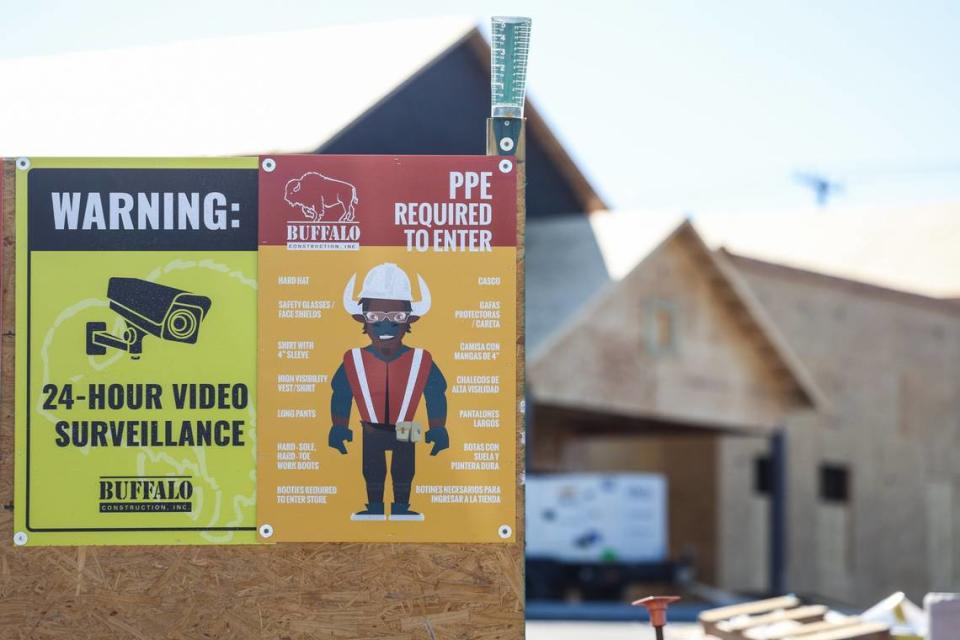
Construction, he knows, is one of the most dangerous jobs any worker can tackle. In February, he was working on a high-rise apartment building in South End when, at a morning safety meeting, he heard about a large chunk of concrete falling multiple floors.
“They said it was a pretty big piece, and if it had fallen on someone, it could have killed them,” he said.
Efrain Villatoro, a longtime carpenter who is now a union representative with the Southeastern Carpenters Regional Council, said he twice last year saw workers in Charlotte tie their fall-protection harnesses to electrical conduits — metal tubes that protect bundles of electrical wires. The practice would have provided no protection in the event of a fall, he said.
“If you don’t die hitting the ground, you’re going to get electrocuted,” he said.
Most deaths are preventable
Falls are by far the most common cause of construction deaths in North Carolina, state records show. But workers have also died when trenches caved in, when forklifts toppled, and when they were electrocuted, struck by falling construction materials or crushed by heavy machinery.
In some cases, the victims apparently made fatal mistakes. In others, records suggest, companies could have taken steps to avert the tragedies.
Based on state records and interviews with construction workers, one thing is clear: Most workplace deaths are preventable.
Jose Canaca Bonilla, Gilberto Monico Fernández and Jesus “Chuy” Olivares were among those who didn’t have to die, family members and worker advocates say.
On the morning after New Year’s Day in 2023, the three were among five men on a scaffold laying brick on an apartment building under construction near Charlotte’s Dilworth neighborhood.
The scaffold — heavily loaded with the workers, equipment and material — suddenly collapsed. Bonilla, Fernández and Olivares plunged 70 feet to their deaths. The two other workers were injured but survived.
In the months that followed, state workplace safety investigators found that the scaffold was “heavily rusted and deteriorated” and was not capable of supporting the more than 1,700 pounds that had been placed upon it. Nor had it been inspected for defects before each shift, as OSHA rules require.
The labor department cited two companies, Old North State Masonry and Friends Masonry, for an array of safety violations.
Several days before the men died, Kenny Price, the insulation installer, was riding on the same scaffold when about 15 workers climbed onto it, he said. It was too much weight, he concluded.
“It worried me enough to go to my supervisor,” he said. “ ‘And I told him: ‘It’s unsafe man.’ I knew it was an accident waiting to happen.”
His supervisor told him and two co-workers that they should get off the scaffolding, Price said.
Days later, when the scaffold collapsed, he was grateful they paid attention to the risk.
“That could have been me,” he said.
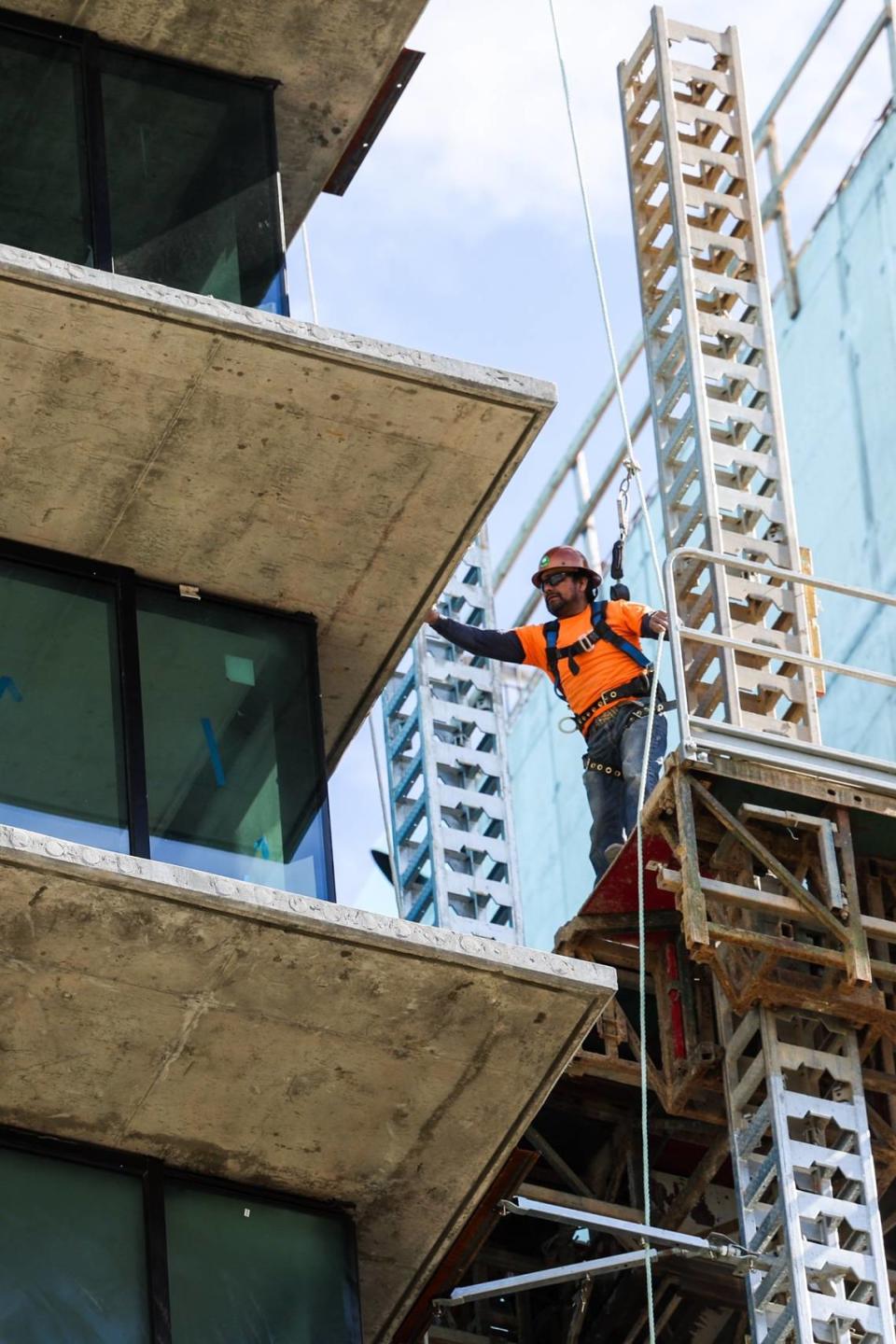
Why is this happening?
Workers, lawyers and experts point to several reasons for the growing number of construction workers dying on the job.
As construction continues to boom, some contractors are so desperate for employees that they’re hiring workers with less experience. And when labor is in short supply, contractors can find themselves in a rush to meet deadlines, construction workers say.
Frank Brown, a superintendent for a Charlotte glass company he didn’t want to name, says his employer places great emphasis on construction safety. But at some others, he says, “a lot of the time, the schedule is more important than the safety.”
Just this month, he said, he was on the third floor of a building under construction on East Morehead Street when he opened a door to another portion of the building.
Fortunately, he was paying attention. If he’d walked through that door, he would have plunged at least 20 feet — a fall that likely would have killed him or left him badly injured. The floor past the door had not been built but the door was not locked.
Many labor unions involved in construction provide their members extensive safety training. But in North Carolina, a state that ranks low in union membership, fewer than 1% of construction workers belong to unions, according to a recent analysis by unionstats.com.

The Observer reviewed data for the 10 most unionized states in the nation, and found that all but one of them had lower occupational death rates than North Carolina.
But hiring union workers is more expensive, and that can make it hard for some contractors to submit the lowest-cost bid on projects.
Construction companies sometimes misclassify their employees as independent contractors. That’s a common occurrence locally, and worker safety can suffer when that happens, according to Dan Segovia, business manager for Ironworkers Local Union 848, which covers the Carolinas.
In doing so, contractors avoid paying workers comp insurance premiums. As a result, one OSHA report says, those employers don’t need to be concerned about workers comp premiums rising after injuries — so they’re less likely to invest in safety.
When such workers get hurt or killed on the job, some contractors pretend they didn’t even know they were on the job site, said Matthew Capece, an attorney with the United Brotherhood of Carpenters who focuses on illegal employment practices.
“These workers are treated like ghosts,” he said.
Although OSHA requires construction companies to provide their employees appropriate safety equipment, such as hard hats and safety goggles, some companies fail to do that, workers say.
Construction worker Jaime Villalobos said that was the case on a high-rise apartment building now under construction in Charlotte’s South End neighborhood, where there are usually more workers than safety harnesses.
Despite all of that — and despite the industry’s rapid growth in North Carolina — the state is inspecting construction sites far less often than it used to.
The state conducts workplace safety inspections in response to complaints and deaths, and as part of its routine inspection program. But state law doesn’t specify how often each worksite should be inspected, and some companies never get visits from workplace safety inspectors.
In 2023, the state labor department conducted about 950 safety inspections at construction sites in North Carolina — less than half the number it performed in 2013.
Staff vacancies are chiefly to blame for the declining number of inspections, officials for the labor department say. As of March, about 22% of the state’s safety compliance officer positions were vacant.
An example of the state’s staffing struggles: The Charlotte field office of the occupational safety division has 29 inspector positions to cover 15 counties. But as of March, just 13 of those positions were staffed with fully trained inspectors. Six of the positions were vacant, and the remaining inspectors are still in training, Sullivan said.
For fully qualified workplace safety inspectors in North Carolina, the starting salary is $58,000 — more than many other states. Still, Sullivan said, many who consider the career discover they can make more money in the private sector and in other government jobs.
“It’s harder and harder to recruit and retain employees long term,” Sullivan said.
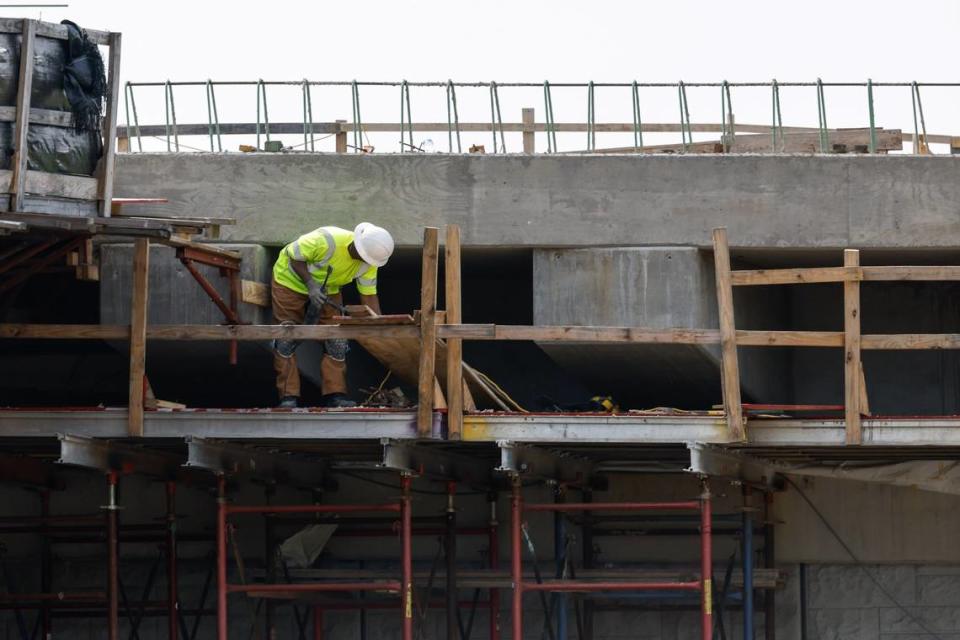
What will keep workers safe?
Safety advocates say several changes could help save lives.
They’d like to see contractors slow down, take proper safety precautions, and provide the right training and protective gear for all their workers.
They’d like to see more frequent workplace safety inspections.
And they’d like to see stiffer penalties for violators. The average penalty for a serious workplace safety violation in North Carolina in fiscal year 2023 was $3,611 —below the average $4,597 penalty imposed by federal OSHA, according to the AFL-CIO’s latest “Death on the Job” report.
When companies were cited for violations linked to worker deaths in 2022 and 2023, state labor officials trimmed penalties more than 40% of the time, The Observer found.
Carol Brooke, senior attorney with the North Carolina Justice Center’s Workers’ Rights Project, said many people like to see their homes, stores and businesses get built quickly and cheaply. But, she said, it’s crucial that the work be done in a way that won’t result in deaths or injuries.
“You don’t want someone going to work one day and not going home,” Brooke said. “They have children. They have families. They have lives that mean something.
“That’s just something everybody should care about.”
Charlotte Observer reporters Gavin Off and Julia Coin contributed to this story.
Editor’s note: If you think your working conditions are unsafe or unhealthy, you can report your concerns to the North Carolina Occupational Safety and Health division by filling out a complaint online or calling the complaint desk at 919-707-7660 or 1-800-NC-LABOR (1-800-625-2267).

